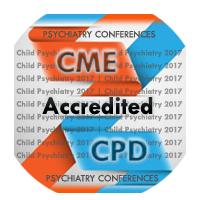Naomi Vandamme,
Trauma Therapy Centre, Belgium
Title: The QCC resilience model: Strength--based model to foster resilience in children and their families
Biography
Biography: Naomi Vandamme,
Abstract
Every year many children are being exposed to traumatic events. Some of these children develop PTSD and/or other mental health issues. Others seem resilient in dealing with the event at hand. Research seems to emphasize the importance of resilience as a protective factor. More recently, studies have been able to identify some of the factors or domains underlying resilience, allowing more targeted interventions (insert references). Nevertheless resilience remains a dynamic process. The QCC (quality care in connection) resilience model is a strength-based model that provides a psychological and pedagogical framework which therapists can use to strengthen resilience in children and their families. The QCC resilience model was developed by the author, a Belgium clinical Psychologist and Psychotrauma Therapist who developed the model during her developmental work with Haitian orphans and abandoned children. The model was developed after experiencing increased limitations of the more trauma-focused treatment methods in working with children who were often permanently dealing with acute and chronic forms of trauma exposure, due to their living conditions. The model is based upon recent research concerning resilience and posttraumatic growth. It integrates several resilience-related child and environmental factors divided into several child-related and environmental-related domains and subdomains. The model is easy to implement and provides the therapist with concrete tools to strengthen resilience in children and families. The model provides room for cultural differences and can be applied within a wide age range. In my talk, I will provide an overview of the evidence on which the model is based, the structure of the model and discuss concrete tools to implement the model in the workplace.

